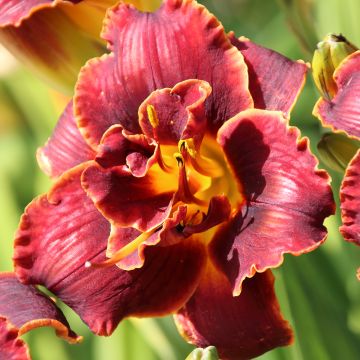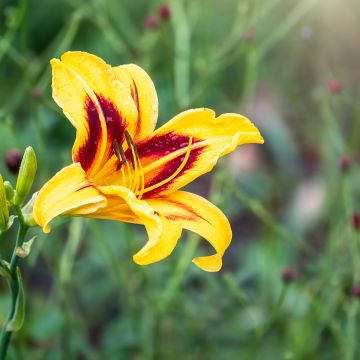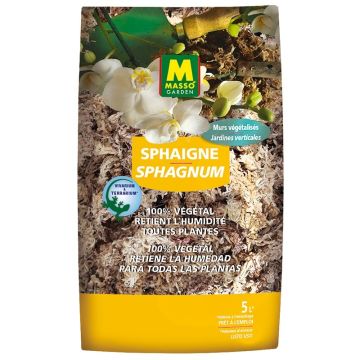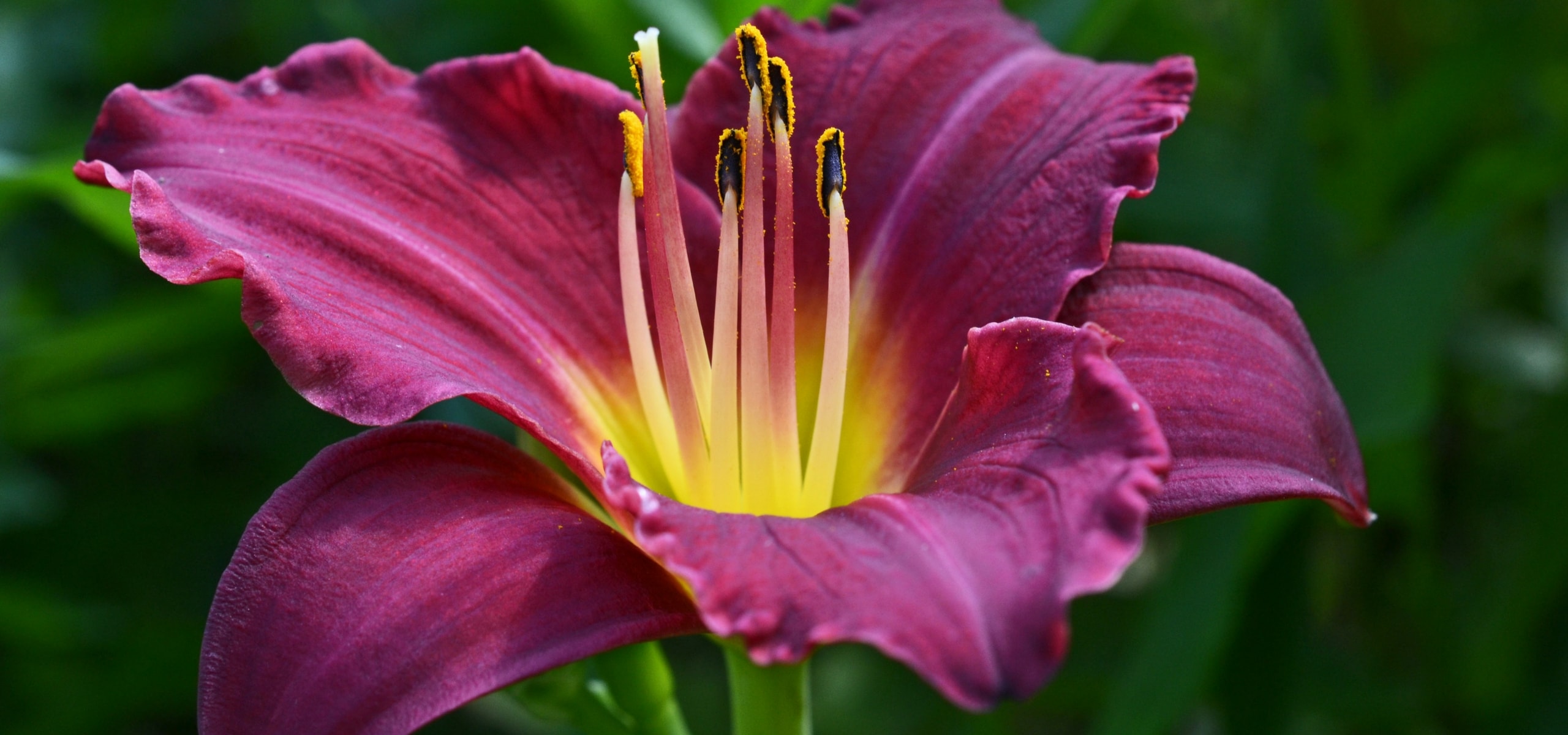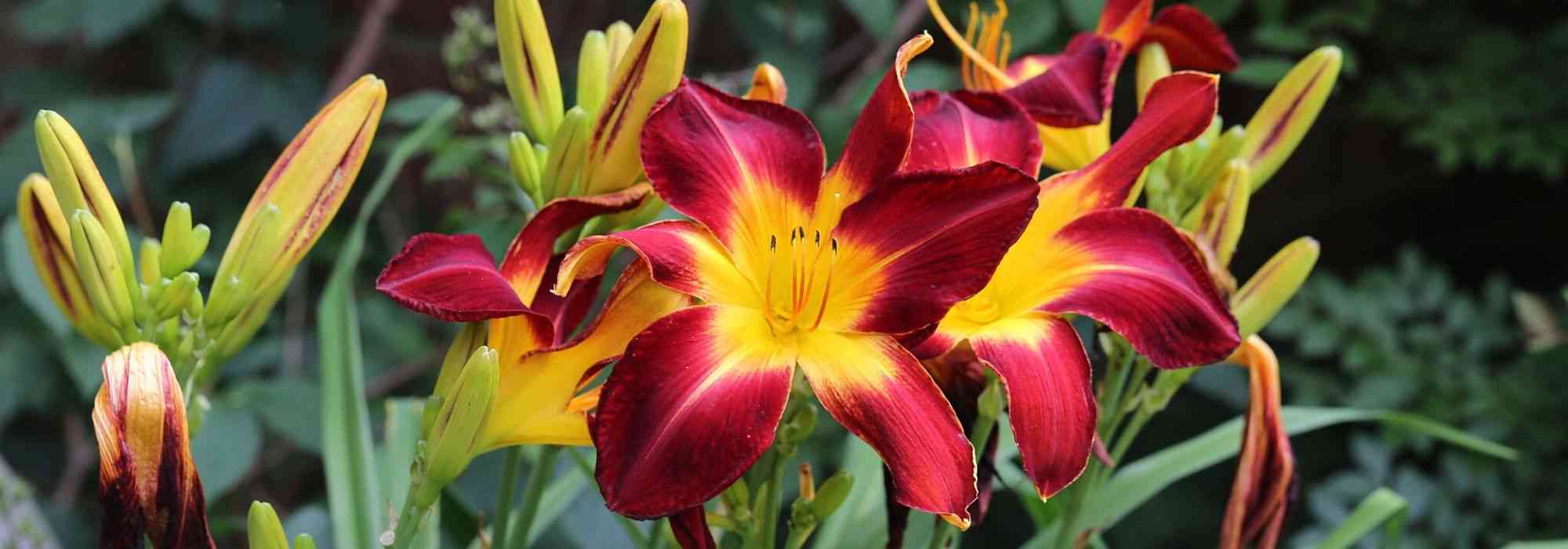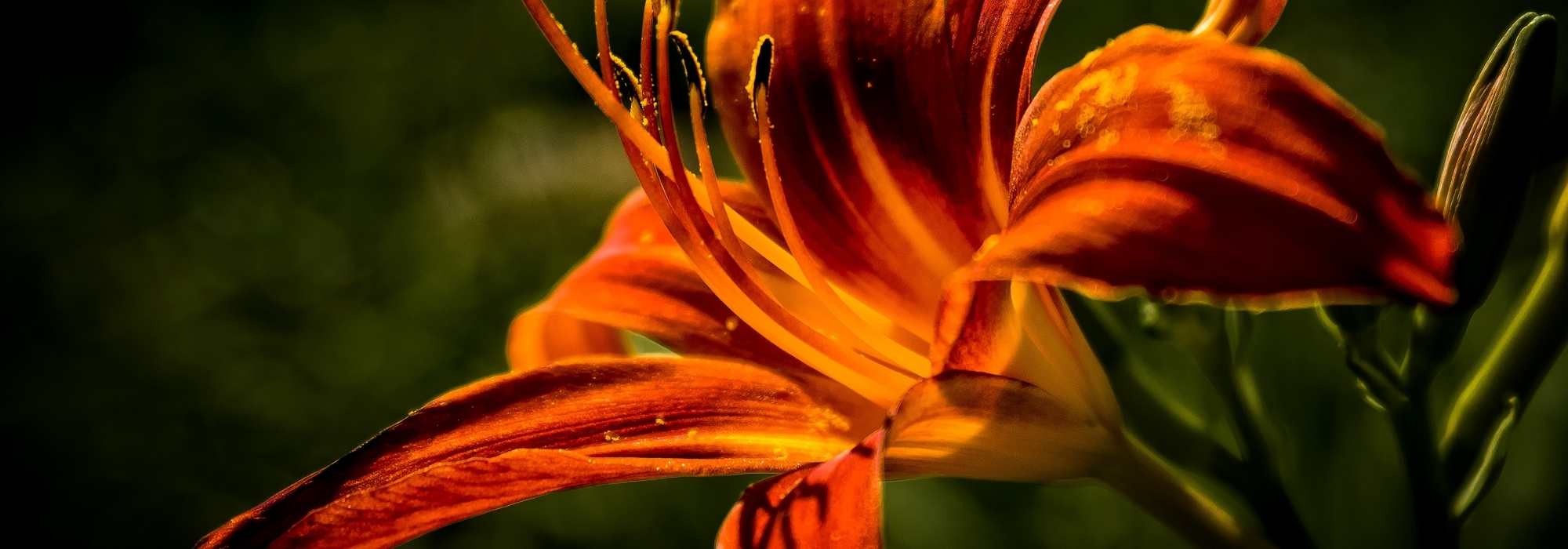

Hemerocallis Frans Hals - Daylily


Hemerocallis Frans Hals - Daylily


Hemerocallis Frans Hals - Daylily


Hemerocallis Frans Hals - Daylily
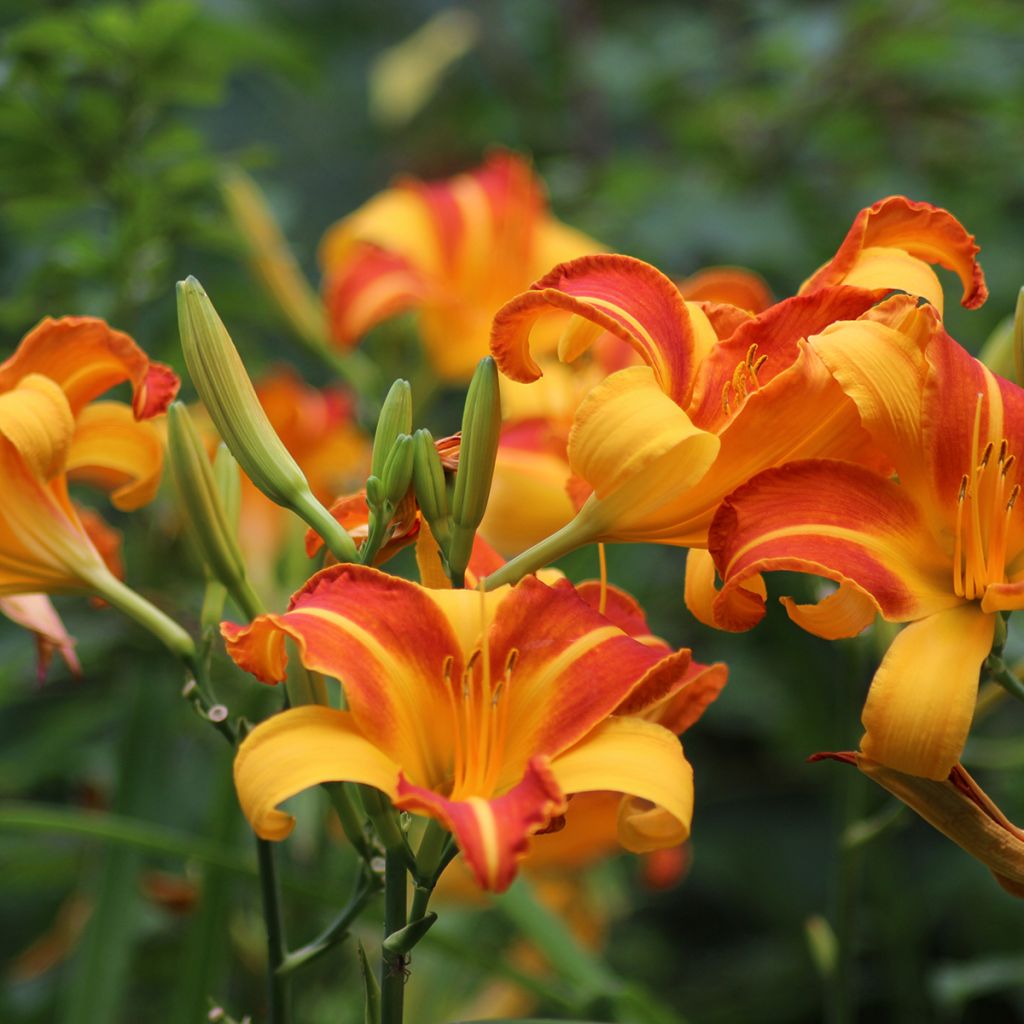

Hemerocallis Frans Hals - Daylily


Hemerocallis Frans Hals - Daylily


Hemerocallis Frans Hals - Daylily


Hemerocallis Frans Hals - Daylily


Hemerocallis Frans Hals - Daylily
Hemerocallis Frans Hals - Daylily
Hemerocallis Frans Hals
Daylily
Disappointment, the Daylilies, which seemed fragile upon arrival, did not adapt and disappeared...
MICHELE, 04/01/2025
Special offer!
Receive a €20 voucher for any order over €90 (excluding delivery costs, credit notes, and plastic-free options)!
1- Add your favorite plants to your cart.
2- Once you have reached €90, confirm your order (you can even choose the delivery date!).
3- As soon as your order is shipped, you will receive an email containing your voucher code, valid for 3 months (90 days).
Your voucher is unique and can only be used once, for any order with a minimum value of €20, excluding delivery costs.
Can be combined with other current offers, non-divisible and non-refundable.
Home or relay delivery (depending on size and destination)
Schedule delivery date,
and select date in basket
This plant carries a 12 months recovery warranty
More information
We guarantee the quality of our plants for a full growing cycle, and will replace at our expense any plant that fails to recover under normal climatic and planting conditions.

Does this plant fit my garden?
Set up your Plantfit profile →
Description
Hemerocallis 'Frans Hals' is perefect for enthusiasts of flowers with dynamic colours. It produces variegated flowers with half of the petals being yellow, the other half being reddish-purple with a yellow midrib and a yellow heart. Intensely bright and original, this floriferous plant will attract everyone's attention. It is called daylily because its flower is ephemeral, but the buds constantly renew themselves throughout summer. The daylily is a problem-free flower, with guaranteed success. Invite it into your garden!
The 'Frans Hals' daylily belongs to the Asphodelaceae family. It is one of the many cultivars derived from hardy perennial plants with deciduous or semi-evergreen foliage, originating from central Europe and temperate regions of Asia. This variety is diploid. It forms a clump that will reach a height of 70cm (28in), with a spread of 60cm (24in). The individual, star-shaped flowers last no more than a day, but they continuously renew themselves on sturdy stems above dense linear foliage, from July to September. The single flowers measure 9cm (4in) in diameter. Daylilies are plants with short rhizomes and fleshy roots.
There are a large number of daylily varieties. The smaller ones (30cm (12in) tall) are excellent border plants, along paths or in flower beds. They can also be planted in clumps in rock gardens. Larger daylilies (up to 1m (3ft)) go wonderfully well with other perennial plants. Plant them in generous clumps in the background of flower beds. Daylilies are surprisingly underused as cut flowers, even though they continue to produce new flowers on cut stems for several days. All summer bulb flowers can be planted alongside daylilies. Gladioli find excellent natural support in this bushy plant, so you won't need to stake them. The same goes for lilies, whose subtly shaped flowers are enhanced by the daylily. Choose varieties with trailing flowers that perfectly complement the open cups of the daylily. Of course, all garden plants are welcome, especially gaillardias, lychnis, bee balm, goldenrod, and phlox. A mix of delphiniums, daisies, and lupins is always successful. Also consider grasses, with their soft and light habit. On a balcony or patio, plant dwarf varieties in large pots at least 30cm (12in) deep.
The name Hemerocallis comes from the Greek "hemero", meaning "a day", and "kallo", meaning "beauty". It can therefore poetically be called "beauty of a day". Many varieties have been developed in Japan, where it is very popular.
Hemerocallis Frans Hals - Daylily in pictures




Flowering
Foliage
Plant habit
Botanical data
Hemerocallis
Frans Hals
Hemerocallidaceae
Daylily
Cultivar or hybrid
Other Hemerocallis - Daylilies
View all →Planting and care
The daylily is often called "the perfect perennial plant" because of its vibrant colours and its ability to tolerate drought and thrive in many different climatic zones while requiring little maintenance. It is very easy to grow and is resistant to pests and diseases. These plants thrive equally well in shade and sun: 4 to 5 hours of daily sunlight is sufficient. Plant them in good ordinary garden soil that does not retain water permanently, especially in winter. They will quickly thrive, spreading without hesitation. Plant them between September and April, burying the collar 3 to 4cm (1 to 2in) below the surface. Arrange the roots on a small mound of fine, light soil. The average planting distance between two plants is 70 to 80cm (28 to 32in) (30cm (12in) for dwarf varieties). Keep the soil moist for the first two months after planting. After that, daylilies require no further care, except for cutting back the faded stems to ground level. Apply a little complete fertiliser at the beginning of spring. Some daylilies can be a little invasive, so feel free to divide the clumps every four or five years, preferably in autumn, after flowering.
Planting period
Intended location
Care
Planting & care advice
-
, onOrder confirmed
Reply from on Promesse de fleurs
Haven't found what you were looking for?
Hardiness is the lowest winter temperature a plant can endure without suffering serious damage or even dying. However, hardiness is affected by location (a sheltered area, such as a patio), protection (winter cover) and soil type (hardiness is improved by well-drained soil).

Photo Sharing Terms & Conditions
In order to encourage gardeners to interact and share their experiences, Promesse de fleurs offers various media enabling content to be uploaded onto its Site - in particular via the ‘Photo sharing’ module.
The User agrees to refrain from:
- Posting any content that is illegal, prejudicial, insulting, racist, inciteful to hatred, revisionist, contrary to public decency, that infringes on privacy or on the privacy rights of third parties, in particular the publicity rights of persons and goods, intellectual property rights, or the right to privacy.
- Submitting content on behalf of a third party;
- Impersonate the identity of a third party and/or publish any personal information about a third party;
In general, the User undertakes to refrain from any unethical behaviour.
All Content (in particular text, comments, files, images, photos, videos, creative works, etc.), which may be subject to property or intellectual property rights, image or other private rights, shall remain the property of the User, subject to the limited rights granted by the terms of the licence granted by Promesse de fleurs as stated below. Users are at liberty to publish or not to publish such Content on the Site, notably via the ‘Photo Sharing’ facility, and accept that this Content shall be made public and freely accessible, notably on the Internet.
Users further acknowledge, undertake to have ,and guarantee that they hold all necessary rights and permissions to publish such material on the Site, in particular with regard to the legislation in force pertaining to any privacy, property, intellectual property, image, or contractual rights, or rights of any other nature. By publishing such Content on the Site, Users acknowledge accepting full liability as publishers of the Content within the meaning of the law, and grant Promesse de fleurs, free of charge, an inclusive, worldwide licence for the said Content for the entire duration of its publication, including all reproduction, representation, up/downloading, displaying, performing, transmission, and storage rights.
Users also grant permission for their name to be linked to the Content and accept that this link may not always be made available.
By engaging in posting material, Users consent to their Content becoming automatically accessible on the Internet, in particular on other sites and/or blogs and/or web pages of the Promesse de fleurs site, including in particular social pages and the Promesse de fleurs catalogue.
Users may secure the removal of entrusted content free of charge by issuing a simple request via our contact form.
The flowering period indicated on our website applies to countries and regions located in USDA zone 8 (France, the United Kingdom, Ireland, the Netherlands, etc.)
It will vary according to where you live:
- In zones 9 to 10 (Italy, Spain, Greece, etc.), flowering will occur about 2 to 4 weeks earlier.
- In zones 6 to 7 (Germany, Poland, Slovenia, and lower mountainous regions), flowering will be delayed by 2 to 3 weeks.
- In zone 5 (Central Europe, Scandinavia), blooming will be delayed by 3 to 5 weeks.
In temperate climates, pruning of spring-flowering shrubs (forsythia, spireas, etc.) should be done just after flowering.
Pruning of summer-flowering shrubs (Indian Lilac, Perovskia, etc.) can be done in winter or spring.
In cold regions as well as with frost-sensitive plants, avoid pruning too early when severe frosts may still occur.
The planting period indicated on our website applies to countries and regions located in USDA zone 8 (France, United Kingdom, Ireland, Netherlands).
It will vary according to where you live:
- In Mediterranean zones (Marseille, Madrid, Milan, etc.), autumn and winter are the best planting periods.
- In continental zones (Strasbourg, Munich, Vienna, etc.), delay planting by 2 to 3 weeks in spring and bring it forward by 2 to 4 weeks in autumn.
- In mountainous regions (the Alps, Pyrenees, Carpathians, etc.), it is best to plant in late spring (May-June) or late summer (August-September).
The harvesting period indicated on our website applies to countries and regions in USDA zone 8 (France, England, Ireland, the Netherlands).
In colder areas (Scandinavia, Poland, Austria...) fruit and vegetable harvests are likely to be delayed by 3-4 weeks.
In warmer areas (Italy, Spain, Greece, etc.), harvesting will probably take place earlier, depending on weather conditions.
The sowing periods indicated on our website apply to countries and regions within USDA Zone 8 (France, UK, Ireland, Netherlands).
In colder areas (Scandinavia, Poland, Austria...), delay any outdoor sowing by 3-4 weeks, or sow under glass.
In warmer climes (Italy, Spain, Greece, etc.), bring outdoor sowing forward by a few weeks.
































